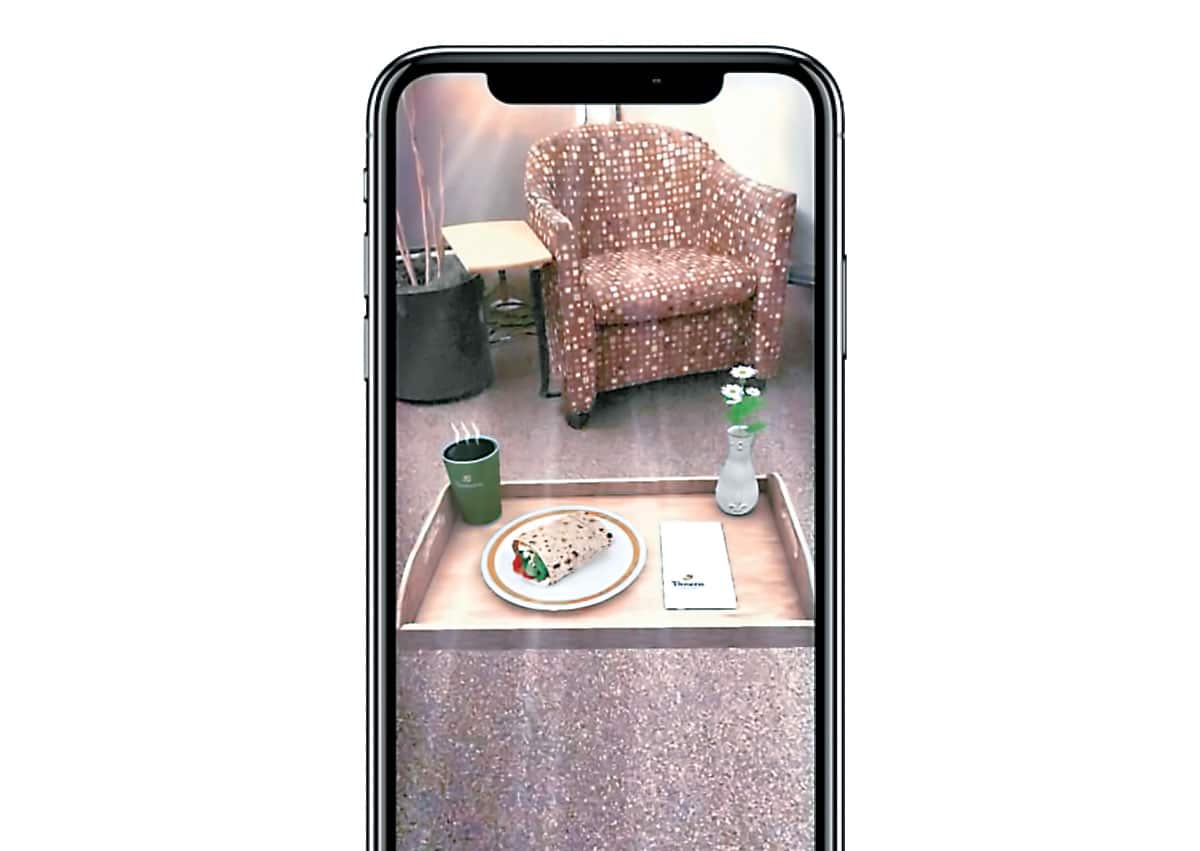In early 2020, Panera partnered with M7 Innovations—a tech company specializing in AI and immersive realities—and created a way for customers to wake up with its signature coffee and breakfast wraps.
Using AR technology, fans accessed immersive filters on Facebook and Snapchat where a yawn into their device’s camera triggered a sunrise and a steaming cup of hot coffee. Then, customers flipped their cameras over to be presented with an animated breakfast wrap on a tray.
The campaign wasn’t Panera’s first foray into AR, but it was the brand’s most successful to date. The effort cost a total of $50,000 across both Facebook and Snapchat, and reached 9.3 million users (25 percent of whom followed up with an in-store visit after engaging with the ad).
With three of these campaigns under its belt, additional AR advertising isn’t off the table for Panera in the future. And while the coronavirus pandemic interrupted most brands’ marketing endeavors, AR could be a worthy arena for future campaigns targeting homebound guests: Fans who are quarantined or simply spending more time at home could appreciate the chance to “view” a restaurant’s offerings before ordering takeout or delivery. M7 Innovations president Matt Maher gave QSR some tips on the ins and outs of AR, reaching guests through Snapchat, and navigating crises like COVID-19.
Repetition is necessary to nail down successful formulas
Panera and M7 Innovations debuted the café chain’s first AR push in 2019 at the SXSW Festival. The #YouMix2 campaign enabled guests to combine favorite Panera flavors (think tomato soup and mac ’n’ cheese) in an AR filter to test out the company’s new mix-and-match promotion. This was followed later in 2019 by a campaign on sports site Bleacher Report that promoted Panera’s breakfast wraps and allowed guests to choose which social media platform they preferred for their AR experience.
“It was great because, through that second campaign, we learned the platforms where people spend their time on AR,” Maher says. “So that led us to the third campaign, which we focused on Facebook and Snapchat. It took the process of running these three campaigns to get to a successful place and hopefully find success in the future.”
By continuously incorporating AR into its advertising strategy over the course of a year, Panera was able to pin down exact approaches to the tech that worked for its customers.
Dive into Snapchat’s unique visual capabilities
Maher says that Snapchat is useful for AR in particular due to elements that allow users to easily share photos and engage with filters. While Facebook and Instagram can be great tools for AR as well, Snapchat was formulated with an emphasis on the selfie camera.
“On Snapchat, the numbers on face lenses are so huge—folks love the selfie camera and the interaction,” Maher says. “So on that platform, the medium is the message. Snapchat has really been the leader in augmented reality. They just have the best technology.”
Facebook tends to follow Snapchat’s tech updates, and Maher says Instagram is catching up to the savviness of the disappearing photo app as well. But, overall, Snapchat is a handy channel for the most creative visual campaigns.
Create marketing strategies that last for the long term
While Panera (and nearly every other brand in the industry) pressed pause on its marketing plans when the coronavirus struck, that doesn’t mean the company won’t have a need for innovative advertising in the future. Maher says that Panera views AR advertising not as a one-time gimmick, but as a lasting investment into new forms of marketing.
And, although COVID-19 did massively disrupt life as we know it, the crisis didn’t fully eliminate the need for brands to connect with a group of largely homebound customers.
“Augmented reality is a fun, interactive type of advertising, and, due to this crisis, the entire industry has stopped that fun messaging for a bit,” Maher says. “But we’re going to get to a point where people are craving real meals at home. That’s when people don’t want a menu that’s just text, but visuals of the food. Maybe I’m optimistic, but I think there’s a huge opportunity with AR and similar marketing there because the technology is so strong—seeing that visual in front of you at home is just pretty amazing.”










